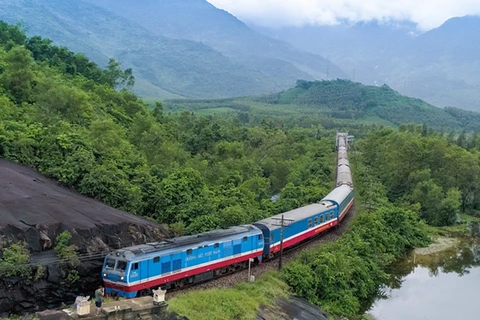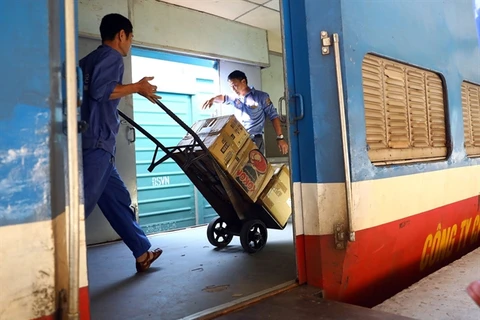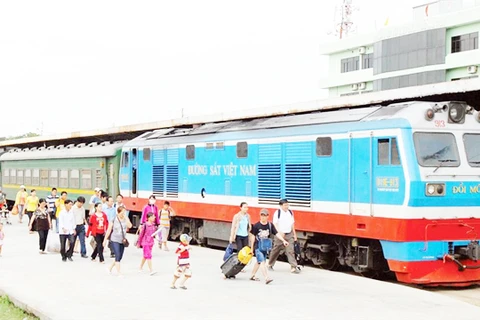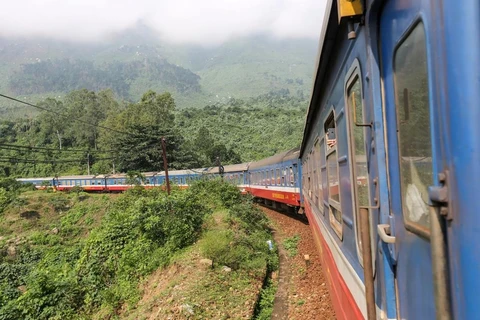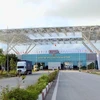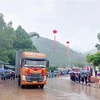 The railway sector is struggling with infrastructure obstacles and the COVID-19 pandemic’s impacts, forcing it to restructure itself (Photo: VietnamPlus)
The railway sector is struggling with infrastructure obstacles and the COVID-19 pandemic’s impacts, forcing it to restructure itself (Photo: VietnamPlus) Hanoi (VNA) - Facing an increasing range of difficulties in business, the railway sector is exerting its maximum efforts to restructure itself for changes and survival.
Despite changing the model, rearranging, restructuring, separating and merging units, the industry has made few breakthroughs and its share in the transport market has declined year by year.
With the impact of COVID-19 and a host of bottlenecks in infrastructure and investment, the sector has been forced to drastically restructure at all costs.
Restructuring considered as a regular task
The Vietnam Railway Corporation (VNR) was established in 2003 based on the rearrangement of the Vietnam railway union.
In 2010, the VNR changed its model to have more than 60 affiliated firms and units. In 2013, it began a restructuring project with a focus on the equitisation of a number of member companies, especially the Hanoi and Saigon Railway Transport Joint Stock Companies. However, the operation of the two companies remained ineffective, leading to the Prime Minister’s decision to allow the VNR to build another restructuring project for the 2016 – 2020 period in 2017.
According to Vu Anh Minh, Chairman of the VNR Members’ Council, another restructuring project have already been submitted 41 months ago, but still waiting for permission from the government.
As a result, the sector has asked the Government for permission to conduct some urgent tasks, such as merging the Hanoi and Saigon Railway Transport JSCs, and cutting the number of dependent units to reduce costs, and effectively exploit existing resources and assets.
Minh said that in each period, according to market demand and social-economic development, there is a need for restructuring to adjust the product scale structure.
Restructuring is a regular task, he affirmed, adding that it is not only an arrangement but also a restructuring of finance, market, products, investment, workforce, and organisational structure.
In 2011 – 2015 period, the VNR focused on rearranging the production model after a period of blooming.
In 2017 – 2020, it overhauled its apparatus to boost production and business capacity. It also re-organised enterprises and prevented those under the same corporation or group from following the same line of business to reduce internal competitiveness.
“Before and in 2010, there was no need to focus on freight transport because passenger tickets were always sold out. However, when the sector’s share in passenger transport market decreased, switching to freight transport was a must,” said Minh.
Not letting nearly 30,000 workers to be displaced
Admitting that the railway sector is no longer in its golden stage and must reduce the size of its workforce rather than letting nearly 30,000 workers to be displaced, Minh noted there will be all-out restructuring efforts to be done in 2022.
 The industry passed its golden age of long waiting lines for tickets and it is time for changes to save nearly 30,000 workers (Photo: VietnamPlus).
The industry passed its golden age of long waiting lines for tickets and it is time for changes to save nearly 30,000 workers (Photo: VietnamPlus). Recently, a restructuring project for the VRN during 2021 – 2025 has been submitted to the Prime Minister with a focus on merging the Hanoi and Saigon Railway Transport JSCs and divesting the VNR's capital in 13 member enterprises.
According to Minh, if the epidemic ends in 2021 and a 7-trillion-VND project to renovate and upgrade the Hanoi-Ho Chi Minh City railway route is completed, new room for better infrastructure capacity as well as recovering freight and passenger transport can be expected for 2022.
If the project is not completed, Minh forecast the VNR to continue suffering profit losses and must exploit its untapped infrastructure potential at stations./.
| In 2020, the VNR lost 1.3 trillion VND, of which the Hanoi and Saigon Transport JSCs lost 212 billion VND and 300 billion, respectively. It is expected that in 2021, these two companies will lose about VND 700-800 billion VND due to the mass construction and upgrade of works under the 7 trillion VND project, during which they have to stop operating trains. |
